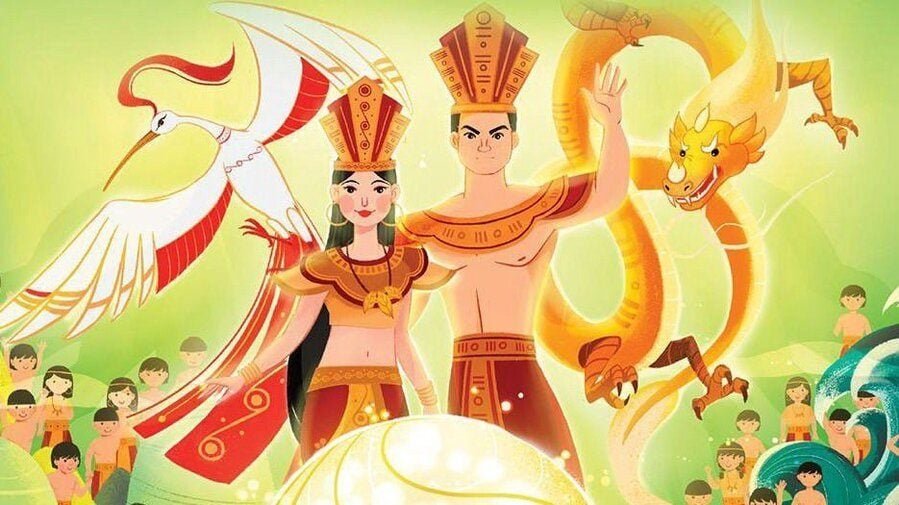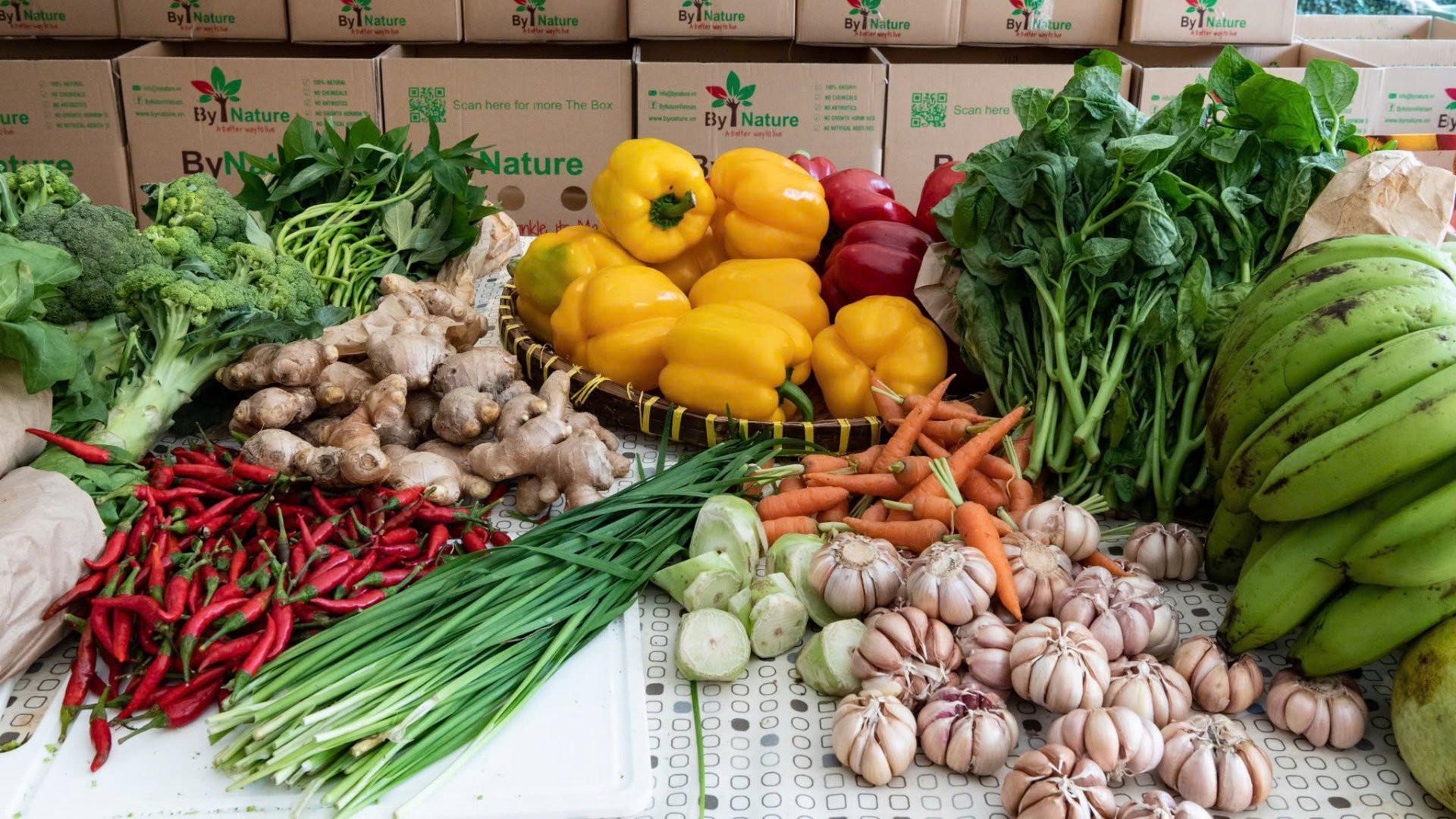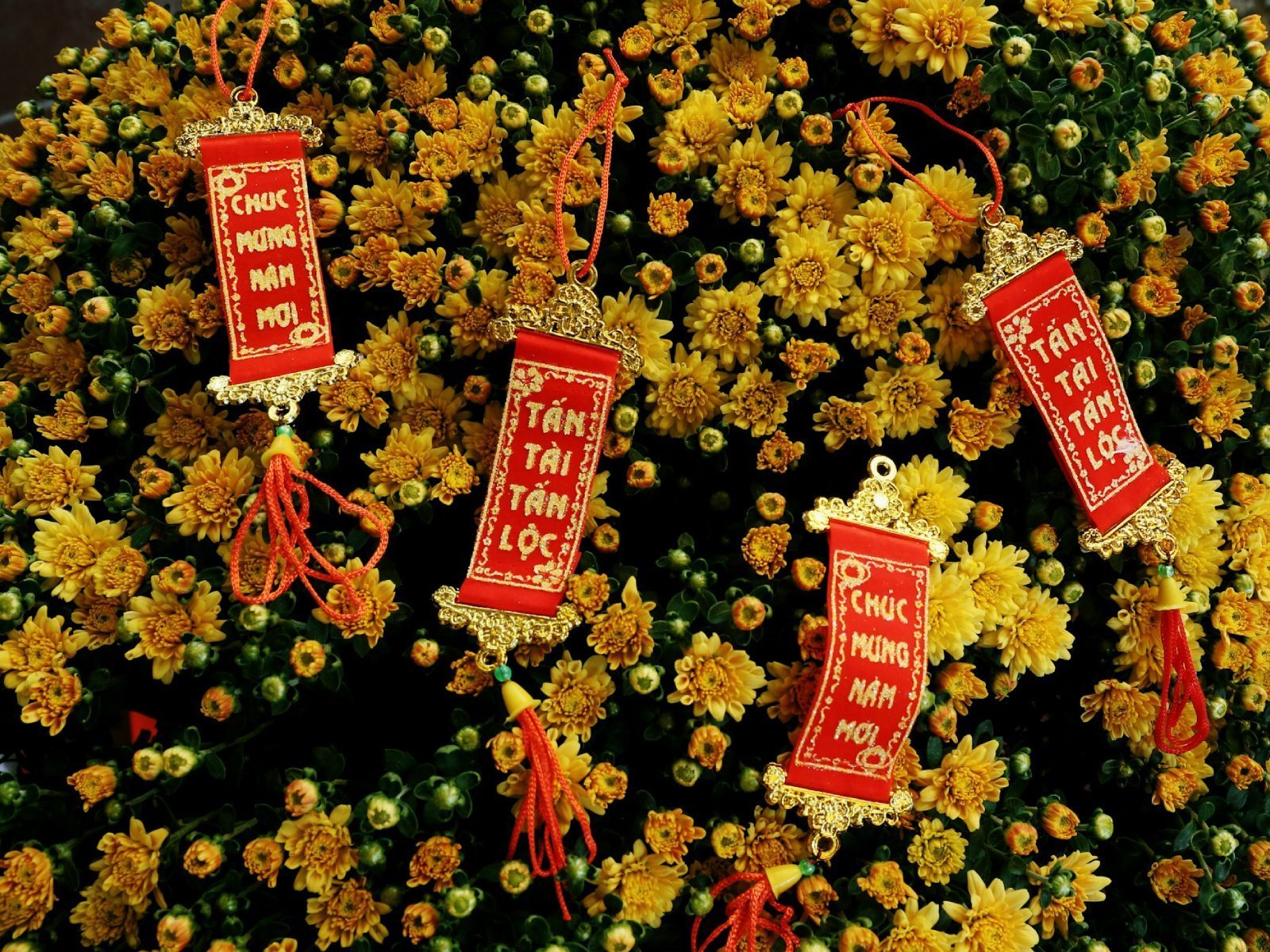Shrouded in folklore, Vietnamese history is full of mythology, legends and stories. Vietnamese myths and legends play an important role in teaching Vietnamese children about their culture and origins, as well as valuable moral lessons and values.
Table of Contents
1. The Vietnamese Creation Myth – the Legend of Lạc Long Quân and Âu Cơ
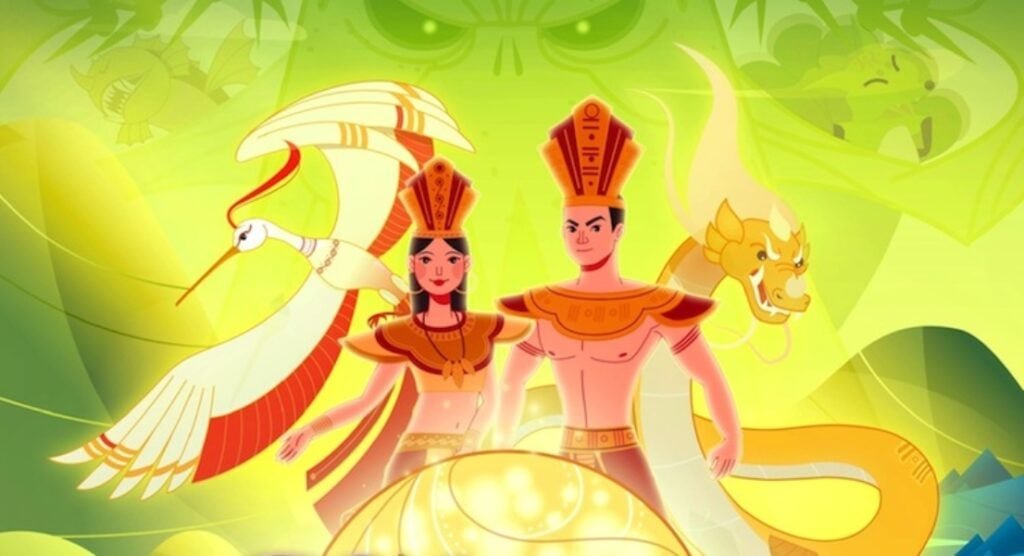
One of the most important stories in Vietnamese mythology is the Vietnamese creation myth.
This involves Lạc Long Quân, the son of a tribe leader and dragon princess. A physically imposing figure with magical powers and a fascination for the ocean, he protected against foreign threats and taught the ancient Vietnamese people valuable lessons in agriculture and architecture, giving a fledgling ancient Vietnam the foundations upon which to flourish into a civilisation.
Together with his wife, Âu Cơ, a descendant of mountain fairies, they had a hundred eggs, which hatched into a hundred children. However, as respective descendants from dragons and fairies, Lạc Long Quân and Âu Cơ longed to return to the sea and highlands. Hence, they separated.
Lac Long Quan took 50 children to the sea, and Au Co took 50 children to the mountains, where they governed and learned to build houses, cultivate food and live in harmony with the natural environment.
Believed to be the ancestors of modern Vietnamese people, these children were dispersed across the land. The eldest son was said to be the first of the Hùng Kings, the original dynasty of Vietnam, whose importance is celebrated today as Hung King Festival.
Today, the story of Lạc Long Quân and Âu Cơ is told to promote the idea of unity and shared origins amongst Vietnamese – the ‘children of the dragon and the fairy’.
2. The Fight Against Natural Disasters – the Legend of the Mountain God and the Water God
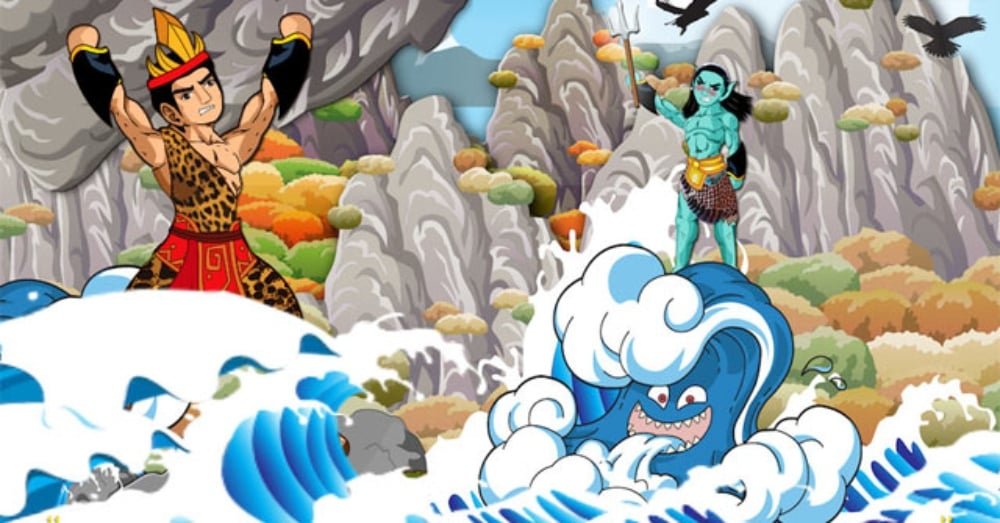
Seeking a suitor for his daughter’s hand in marriage, the 18th Hung King held a contest and found two candidates of an equal match: Sơn Tinh, a mountain God; and Thủy Tinh, a water God.
With complete control over the mountains and the sea and storms, Sơn Tinh and Thủy Tinh engaged in a perilous struggle, reeking devastation across the lands with their destructive powers. Son Tinh eventually came out on top, but Thủy Tinh’s reluctance to concede led him to unleash vicious storms and floods upon the lands, leaving a trail of destruction in his wake.
To protect the lands, houses and crops of the people, Sơn Tinh raised the mountains until Thủy Tinh, exhausted, was forced to retreat. He sought vengeance year after year, but Sơn Tinh always repelled him.
In this myth, Thủy Tinh represents the annual floods and storms which devastate Vietnam, whereas Sơn Tinh shows the resilience and fortitude of Vietnamese people when faced with natural disasters.
3. The legend of An Dương Vương – The Betrayed Emperor
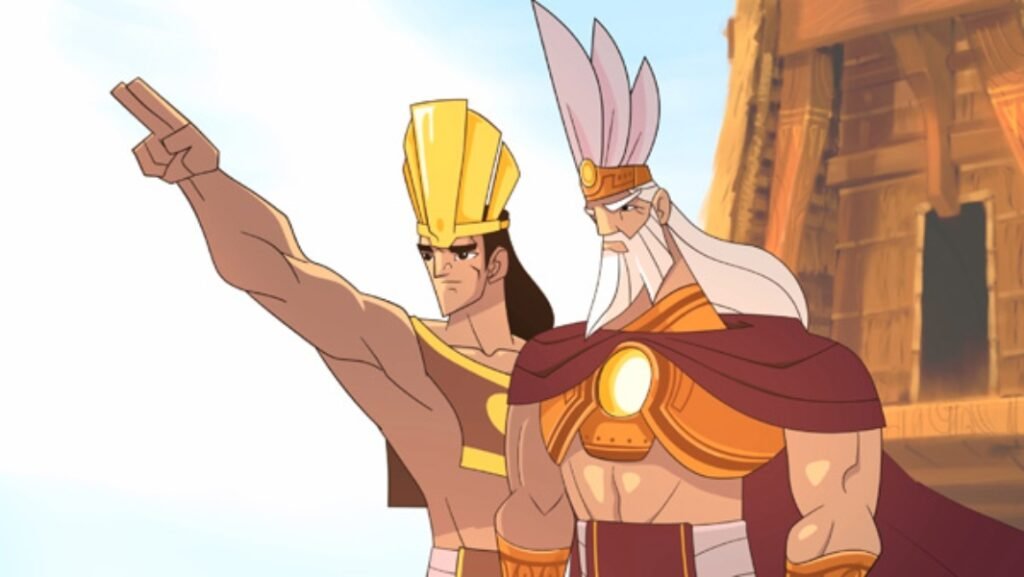
Long ago, An Dương Vương, who rose to power following the break up of the Hung dynasty, established the second dynasty of Vietnam. Armed with a magical crossbow, which made his army and Loa citadel invincible, An Dương Vương overpowered his rivals. Devising a scheme to overthrow the second dynasty, rival warlord Trieu Da proposed a marriage between his son, Trong Thuy, and An Dương Vương’s daughter, My Chau.
After earning the My Chau’s trust, Trong Thuy persuaded her to steal the magic crossbow, which he brought to Trieu Da. With the magical crossbow in hand, Trieu Da launched a successful attack on An Dương Vương’s troops. In defeat, An Dương Vương fled with his daughter to the sea, before turning to the turtle God, the maker of the magic crossbow, for help.
After revealing his daughter’s role in his defeat, An Dương Vương killed My Chau instantly, then disappeared into the sea for good. Her blood flowed into the sea and is said to have formed pearls. Trong Thuy, overwhelmed with grief, committed suicide by jumping into a well. Pearls washed in this water are said to shine particularly brightly, symbolising the undying love between the pair.
4. Hoan Kiem Lake – the Legend of Le Loi and the Magical Sword
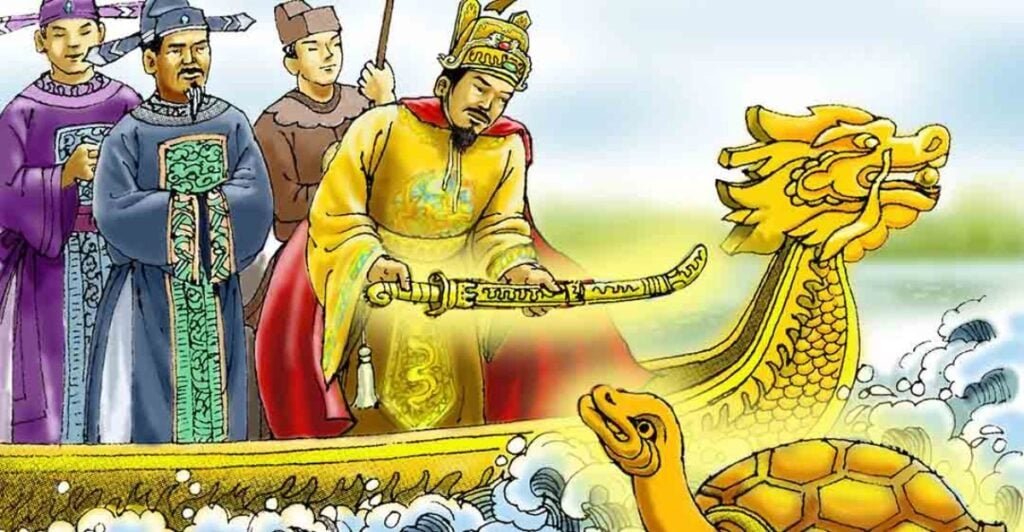
As one of the most iconic sites in Vietnam, Hoan Kiem Lake, is a namesake stemmed from a local legend.
Long ago, when gripped by the Chinese Ming dynasty’s attempts to colonise Vietnam, Le Loi, a local warlord, took up arms in defence of his nation. Beset with obstacles, Le Loi’s rebellion struggled to gain traction until one day, when he stumbled upon a magical sword, whereupon his campaign against the Chinese started to flourish. Following victory after victory, Le Loi drove out the Chinese, before becoming emperor Le Thai To.
Many years later, whilst out boating on the lake, a turtle asked emperor Le Thai To to return the sword to the Dragon King, its rightful owner. Le Thao To obliged, and the lake that witnessed the returned sword became known as Hoan Kiem Lake, or lake of the returned sword.
To this day, Hanoians believe the turtles found in Hoan Kiem lake are sacred because of their role in repelling the ancient Chinese invaders.
Hanoi Off the Beaten Track: Discover Hanoi’s Lesser-Known Attractions with the Young Generation
5. Tao Quan – the Three Vietnamese Kitchen Gods
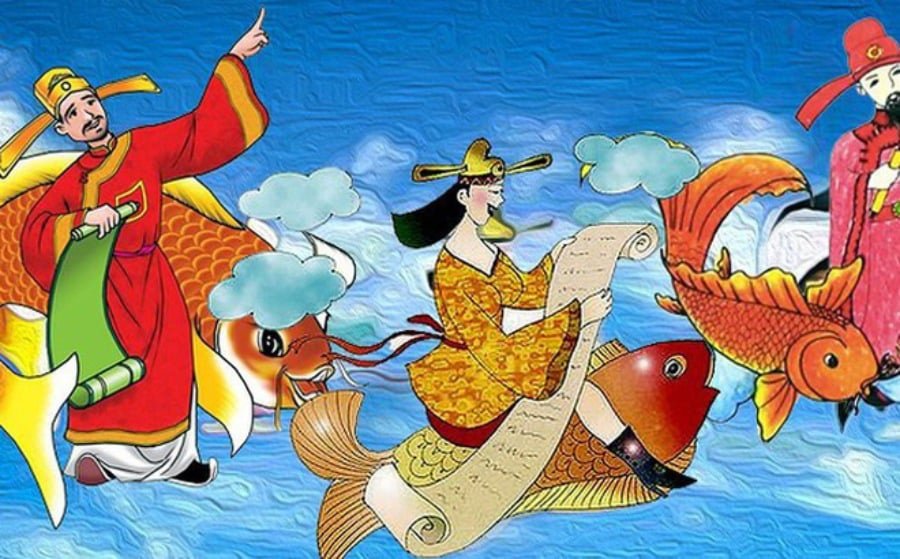
There is a common belief that three kitchen Gods, named Tao Quan, are present in every Vietnamese kitchen.
These three figures come from a story long ago about a woodcutter, his wife, and a hunter. The woodcutter gripped with financial worry and unable to put food on the table, turned to drink and destructive behavior. His wife, a long-time sufferer of his abuse, finally fled their ramshackle cottage when he took to beating her.
Wandering the forest for weeks beset with hunger and injuries, the wife arrived at a hunter’s cabin. The hunter, a man of integrity, took pity and gave her refuge and food to eat, and after some time they got married and lived together in great happiness until one day when the hunter was out in the forest looking for game meat, an unkempt beggar knocked at the hunter’s door, asking for a place to stay.
Whilst graciously preparing a meal for the beggar, the woman came to the shocking realization he was her former husband. Upon hearing the hunter’s returning footsteps, she hid the beggar in a haystack, fearing his discovery would ruin her newfound happiness.
Loaded with an excellent haul and keen to celebrate the approaching Tet holiday, the hunter made a roast on the haystack, completely unaware of the beggar. Preferring to remain silent for fear of retribution towards his former wife, the beggar was set ablaze. The former wife, filled with grief when realizing the beggar was sacrificing himself for her, threw herself into the flames. The hunter, together with the star-crossed lovers, threw himself into the flames as he could not imagine life without the hunter’s wife.
The noble deaths of the three kitchen gods are remembered on the 23rd day of the 12th month. On this day, Vietnamese people offer the best food and spices and money and clothing.
6. The origins of bánh chưng – the legend of Lang Lieu
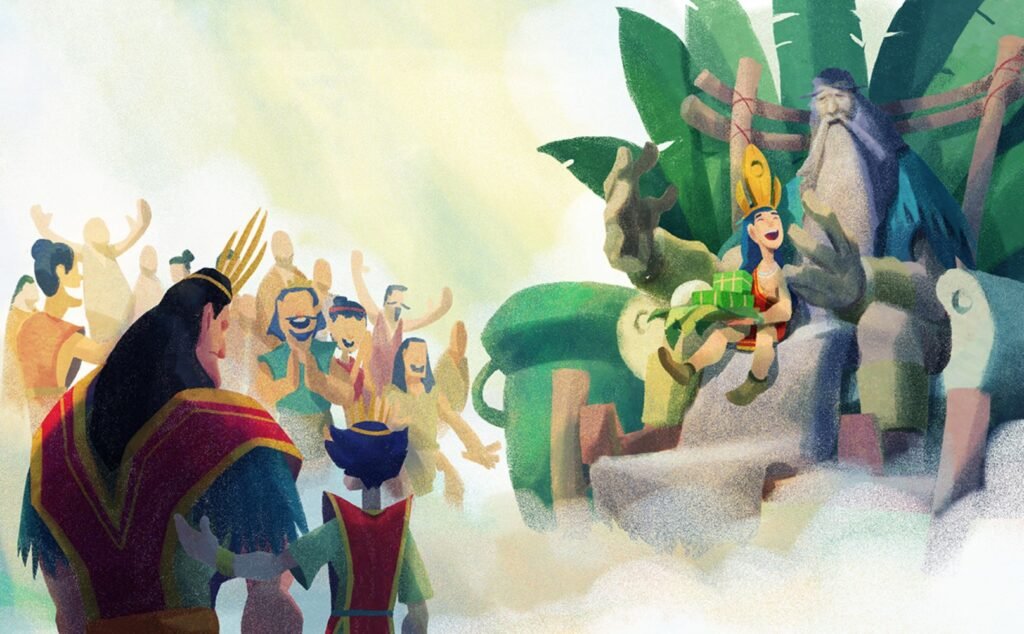
Given the huge importance of local dishes in Vietnamese culture, it is no surprise to find mythology evident in them.
Banh Chung, a traditional Vietnamese cake, is said to be a creation of Lang Lieu, the son of the 6th Hung King. The 6th Hung King who, approaching the twilight years of his life, summoned each of his sons to make an offering of which the best would become his successor.
Seeking to impress their father, the sons turned to exotic and foreign delicacies. Lang Lieu, a simpler and less pretentious character, turned to two local ingredients: banh chiay (rice flour) and banh chung (mung bean and pork). Banh chiay represents the sky, and banh chung represents the land, plants and animals. Impressed with the symbolism and simplicity of the ingredients and the resourcefulness of Lang Lieu, the King chose him as his successor.
Contemporary Vietnam holds high regard for Banh Chung, amongst other local Vietnamese street food delights which can be easily found at street stalls and widely given as food offerings at pagodas and temples during festivals like Tet Nguyen Dan and Mid-Autumn festival.
7. The Four Elements – the Turtle, the Dragon, the Unicorn and the Phoenix

Turtles, dragons, unicorns and phoenixes are revered in Vietnamese mythology for the representation of the four main elements: earth, air, fire and water.
As a testament to their importance in modern Vietnam, you will often come across the animals at places of worship and festive celebrations, from temples and dwellings to mid-autumn and tet.
The dragon, like in many countries across South East and East Asia, symbolises peace, prosperity and good luck. What differentiates the Vietnamese dragon is its anatomy: an eclectic combination of fish, lizard, deer and fish all wrapped up in one body. Many of Vietnam’s most famous sites, such as Ha Long Bay, get their names from and are associated with legendary tales of Vietnamese dragons.
Another composite creature is the unicorn, which is part horse, dragon and buffalo. Like the dragon, the unicorn is said to bring about good luck, as well as the power to ward off evil spirits from houses and pagodas. For this reason, you often see the unicorn at doorways or near the entrances of dwellings and religious sites.
The phoenix, which is made up of snake, eagle, fish and peacock, represents nobility and grace. As a symbol of royalty, the phoenix (yin) and dragon (yang) are common sights at Vietnamese weddings, for they are believed to bring happiness to a marriage.
As the only living animal of the four mythical creatures, the turtle is celebrated as a symbol of longevity, wisdom and spiritual endurance. At the temple of literature in Hanoi, 82 turtle sculptures carry the names of doctoral graduates from the Le Dynasty era, which was seen as the highest sign of respect towards the most educated in society.
From kitchen gods to sacred animals, myths and legends play a huge role in Vietnamese culture. They are in part reminders of Vietnam’s origins, but they also provide moral lessons which still apply today. And so, despite the massive societal changes going on in Vietnam today, these stories continue to endure the test of time.
For more information about Vietnamese culture, check out our guide to Vietnamese etiquette and festivals.

